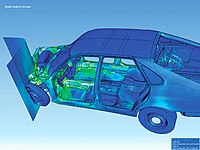
Photo from wikipedia
Due to variations in imaging conditions, spectra of the same type of ground objects usually exhibit certain discrepancies, leading to intraclass spectral distance increase and interclass distance decrease. As a… Click to show full abstract
Due to variations in imaging conditions, spectra of the same type of ground objects usually exhibit certain discrepancies, leading to intraclass spectral distance increase and interclass distance decrease. As a result, classification accuracy is greatly affected, especially in cases with few labeled samples. For representation-based classifiers, the spectral variability within limited training samples is far from sufficient to represent diverse variations within testing ones. To handle this problem, a spectral variation augmented representation for hyperspectral imagery classification (SVARC) with few labeled samples is proposed in this article. First, a novel class-independent and -dependent components-based linear representation model (CICD-LRM) is proposed to emphasize the representation of spectral variation. Second, depending on spatial and spectral correlation, the CICD-LRM-guided global and local spectral variation extraction schemes are designed, and a fused spectral variation dictionary is constructed by concatenation. Finally, a classifier for hyperspectral images based on the CICD-LRM and spectral variation dictionary is proposed, and specifically, three different spectral variation reconstruction strategies are designed. Similar to most representation-based classifiers, a residual-driven decision is also employed in the proposed classifier. Comparative experiments are conducted with eight classical and state-of-the-art methods using two benchmark datasets. The experimental results demonstrate that the proposed SVARC method significantly outperforms the compared ones in cases with few labeled samples.
Journal Title: IEEE Transactions on Geoscience and Remote Sensing
Year Published: 2022
Link to full text (if available)
Share on Social Media: Sign Up to like & get
recommendations!